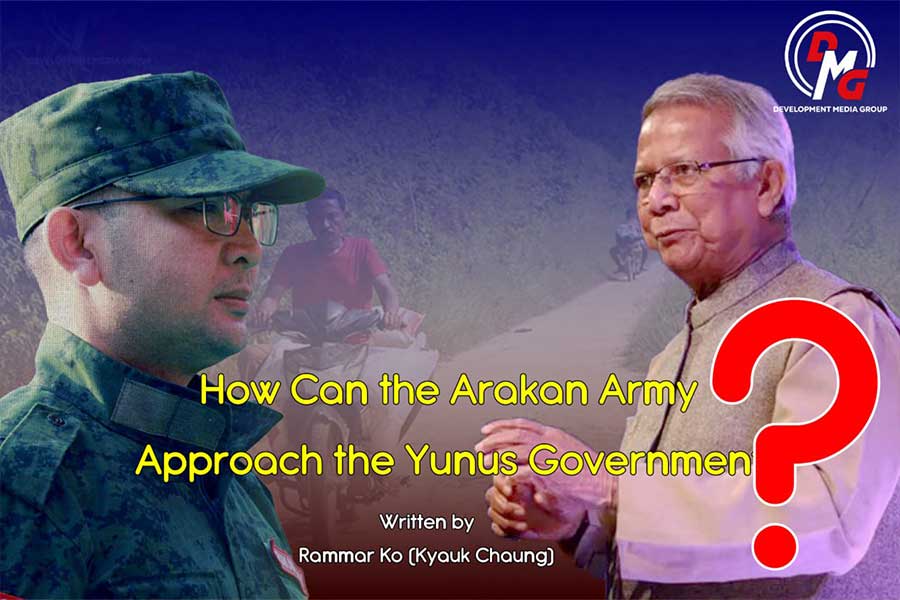- Watermelon farmers in Arakan State hit by low demand and rising costs
- Weekly Highlights from Arakan State (Dec 29, 2025-Jan 4, 2026)
- Family appeals ULA court ruling over Pauktaw village murder
- Arakan State's fishing industry struggles amid junta blockades and security threats
- Junta, AA clash near Sittwe
Editorial: Fear as a Weapon of War and Peace
The ramming of a military vehicle at high speed into a group of young protesters is emblematic of the callous disregard for human life that this regime has exhibited since taking power. The incident on December 5 offers a glimpse of the junta’s attitude toward the people. In an amateurish attempt at gaslighting, state media subsequently claimed that “security forces conducted the crowd dispersal operation in line with the regulations.” There is irrefutable video evidence that says otherwise.
10 Dec 2021

Following the military coup on February 1, 2021, anti-dictatorship movements across Myanmar intensified. By now, it is clear that resistance to the junta is larger and more sustained than any of the country’s previous mass mobilisations against military rule. It has also been more deadly, for both sides of the conflict, as large numbers of people from mainland Myanmar have taken up arms against the regime, joining the battle-worn ranks of ethnic armed groups in armed opposition to the State Administration Council, as the junta calls itself.
More than 1,300 people have been killed by security forces in the 10-plus months since the coup, according to the Assistance Association for Political Prisoners (AAPP). Hundreds and possibly thousands of Tatmadaw troops have also been killed by resistance fighters. The National Unity Government (NUG) said 1,300 Tatmadaw soldiers were killed in just the one-month period from October 7 to November 6. The military says its fatalities are much fewer, and the reality likely lies somewhere between the two accountings.
What is clear is the distinction in the “who” and “how” of these casualties.
The ramming of a military vehicle at high speed into a group of young protesters is emblematic of the callous disregard for human life that this regime has exhibited since taking power. The incident on December 5 offers a glimpse of the junta’s attitude toward the people. In an amateurish attempt at gaslighting, state media subsequently claimed that “security forces conducted the crowd dispersal operation in line with the regulations.” There is irrefutable video evidence that says otherwise.
So when 11 people were reportedly bound and burned alive in a Sagaing Region village on December 7, it is not surprising that the Tatmadaw has been accused. After all, we’ve seen this callous disregard for human life before. And not just days earlier on a Yangon street; in Arakan State and other ethnic regions, it has been on display for years.
Arbitrary killings and detentions of civilians, rape, arson and indiscriminate arms fire were regular occurrences during the two-year conflict between the Tatmadaw and Arakan Army (2018-2020). Before that, many of these same accusations were leveled agains the military in its brutal crackdown on Arakan State’s Muslim population, as more than 700,000 fled to neighbouring Bangladesh in 2016-17.
Now there are concerns that a brief respite from the violence and lawlessness of recent years may be coming to an end, as Tatmadaw troop movements have raised military tensions in recent days and a pagoda festival is showcasing the kind of unnerving militarisation that is all too familiar to the people of Arakan State. Using the Covid-19 pandemic as a pretext, restrictions and invasions of privacy are rightly seen as alarming.
The annual Sandawshin Pagoda Festival is held on Anauk Phayonkar Island in Pauktaw Township, Arakan State. The festival has not been held the past two years, however, due to the armed conflict and the pandemic. Prior years’ festivals have not included troop deployments, so when the soldiers and police arrived this year, some vendors left.
Whether one believes the ostensible justification for the security forces’ presence (they are purportedly there to help with local road repairs and provide security), the effect has been undeniable: Festivities and attendance during the eight-day celebration will be diminished as people opt to stay away in fear.
Arakan State had been a relative oasis of calm and stability in the months following the February coup. The state’s people can hardly be blamed if they were to be characterised as not spoiling for a fight with the military regime after two years of conflict and more than 230,000 civilians displaced. But fear is returning amid signs of renewed militarisation and reports of barbarism featuring a familiar perpetrator beyond Arakan State’s borders.
Is this how we will close out the year? Instead of feeling like we’ve “turned a corner,” are Arakan State’s people increasingly, once again, being backed into a corner?




.jpg)















